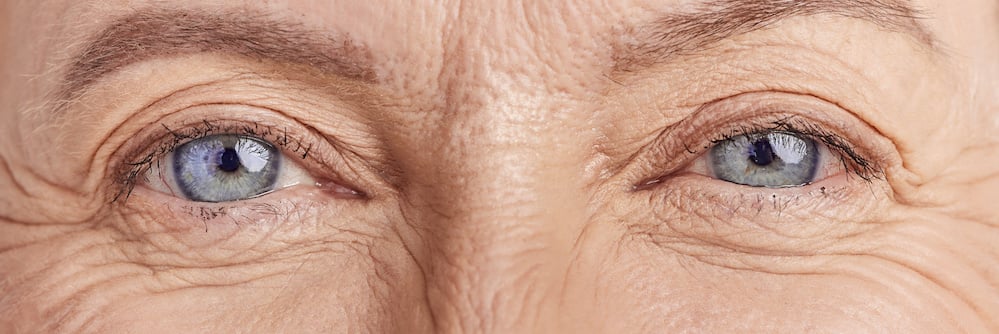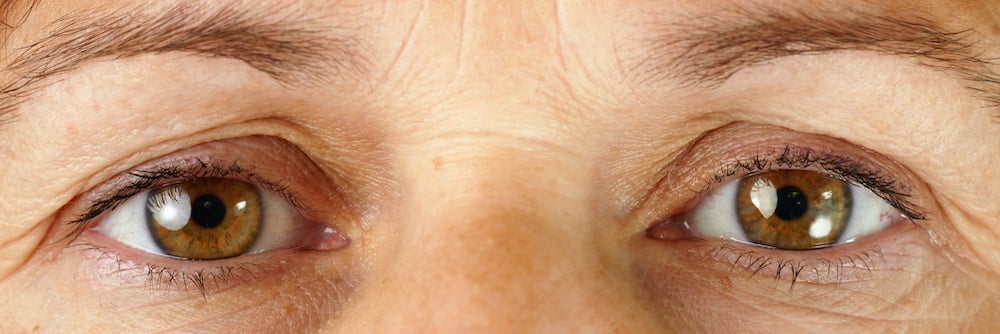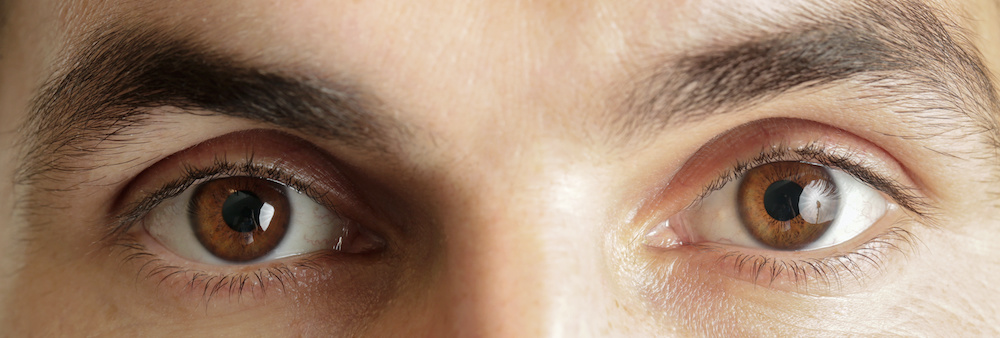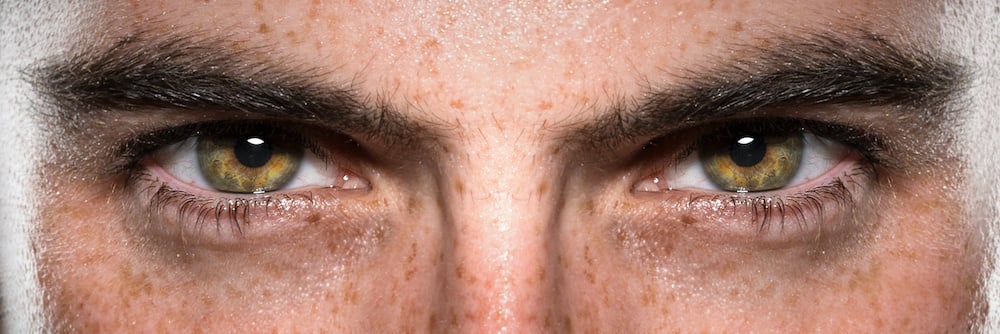Alzheimer's Disease
Eye tracking helps to make cognitive assessment and prediction of disease progression
Parkinson’s Disease (PD) is one of the most common neurodegenerative diseases worldwide, affecting 1% of the population older than 653. The evaluation of oculo-motor function may provide valuable information regarding early disease detection or disease progression4. Studies report an abnormal oculomotor function in 75-87.5% of Parkinson’s disease (PD) patients1,2. These dysfunctions may precede or follow motor symptoms.
The most common reported oculomotor dysfunctions are impairments in saccades, smooth pursuit, and vergence1,2,5. The Substantia Nigra pars reticulata is thought to modulate both saccades and smooth pursuit eye movements6. Therefore, the degeneration of this region in PD results in both saccades and smooth pursuit impairments7.
Voluntary saccades are hypometric in PD, which occurs more in the vertical than in the horizontal place8,9,4,10–12. The ability to inhibit unwanted saccades is also impaired4,10, which may be associated with dopaminergic depletion in the prefrontal cortex. Reaction times and the maximum saccadic velocity of horizontal gaze are slower in PD than controls11,14 and correlate with increased reaction time of finger movement for the finger ipsilateral to the direction of horizontal gaze, but not for the contralateral finger, which indicates that bradykinesia also exists in eye movements in PD11.
Fixation stabilization may also be impaired13. In addition, antisaccades are also altered in PD. In a meta-analysis, the authors reported a significantly increased antisaccade latency and error rate in Parkinson’s15. In addition, a prospective study concluded that antisaccade latency is a predictive marker of the 5 year onset of freezing of gait in PD patients, a PD sign associated with disease severity and progression16.
Smooth pursuit abnormalities have been found in almost 70% of PD patients11. Patients show a reduced smooth pursuit gain and abnormalities in smooth pursuit may be correlated with disease severity5. Smooth pursuit movements may be interrupted by small unwanted saccades5,11,14. In addition, smooth pursuit eye movements could be affected in early PD17.
Studies report an abnormal convergence in about 70% of PD patients11, which can often result in double vision18. Pupil reactivity is also affected in PD. Pupil diameters are larger and have unequal sizes after light adaptation19. In addition, light reflex latency was significantly increased, whereas amplitude, maximum constriction velocity, and maximum acceleration were decreased in PD patients19–21. In fact, a recent clinical study found that the pupillary contraction velocity decreased with disease progression, which suggests that pupil constriction velocity could identify PD progression. All these findings suggest an autonomic imbalance in PD involving the parasympathetic system. Autonomic dysfunction can be an early manifestation of PD and be present in the prodomal stages at least 5 years before diagnosis and as long as 20 years before defined disease22. Therefore, changes in pupil reaction could be present in the prodromal phase14. Pupillometry is a fast, objective, noninvasive, and low-cost technique, which makes pupillary abnormalities an attractive prospect as potential nonmotor biomarkers for early PD detection and monitoring of disease progression23. Eye-tracking tasks could be useful as potential biomarkers for motor or cognitive disease burden in Parkinson's disease24.
Corin MS, Elizan TS, Bender MB. Oculomotor function in patients with Parkinson’s disease. J Neurol Sci. 1972;15(3):251-265. doi:10.1016/0022-510X(72)90068-8
Cipparrone L, Ginanneschi A, Degl’Innocenti F, Porzio P, Pagnini P, Marini P. Electro-oculographic routine examination in Parkinson’s disease. Acta Neurol Scand. 1988;77(1):6-11. doi:10.1111/j.1600-0404.1988.tb06966.x
Wirdefeldt K, Adami HO, Cole P, Trichopoulos D, Mandel J. Epidemiology and etiology of Parkinson’s disease: a review of the evidence. Eur J Epidemiol. 2011;26 Suppl 1:S1-58. doi:10.1007/s10654-011-9581-6
Jung I, Kim JS. Abnormal Eye Movements in Parkinsonism and Movement Disorders. J Mov Disord. 2019;12(1):1-13. doi:10.14802/jmd.18034
Frei K. Abnormalities of smooth pursuit in Parkinson’s disease: A systematic review. Clin Park Relat Disord. 2021;4:100085. doi:10.1016/j.prdoa.2020.100085
Basso MA, Pokorny JJ, Liu P. Activity of substantia nigra pars reticulata neurons during smooth pursuit eye movements in monkeys. Eur J Neurosci. 2005;22(2):448-464. doi:10.1111/j.1460-9568.2005.04215.x
Tanaka M. Involvement of the central thalamus in the control of smooth pursuit eye movements. J Neurosci Off J Soc Neurosci. 2005;25(25):5866-5876. doi:10.1523/JNEUROSCI.0676-05.2005
Kassavetis P, Kaski D, Anderson T, Hallett M. Eye Movement Disorders in Movement Disorders. Mov Disord Clin Pract. 2022;9(3):284-295. doi:10.1002/mdc3.13413
Terao Y, Fukuda H, Ugawa Y, Hikosaka O. New perspectives on the pathophysiology of Parkinson’s disease as assessed by saccade performance: a clinical review. Clin Neurophysiol Off J Int Fed Clin Neurophysiol. 2013;124(8):1491-1506. doi:10.1016/j.clinph.2013.01.021
Shibasaki H, Tsuji S, Kuroiwa Y. Oculomotor abnormalities in Parkinson’s disease. Arch Neurol. 1979;36(6):360-364. doi:10.1001/archneur.1979.00500420070009
Shaikh AG, Ghasia FF. Saccades in Parkinson’s disease: Hypometric, slow, and maladaptive. Prog Brain Res. 2019;249:81-94. doi:10.1016/bs.pbr.2019.05.001
Ba F, Sang TT, He W, Fatehi J, Mostofi E, Zheng B. Stereopsis and Eye Movement Abnormalities in Parkinson’s Disease and Their Clinical Implications. Front Aging Neurosci. 2022;14:783773. doi:10.3389/fnagi.2022.783773
Armstrong RA. Oculo-Visual Dysfunction in Parkinson’s Disease. J Park Dis. 2015;5(4):715-726. doi:10.3233/JPD-150686
Waldthaler J, Stock L, Student J, Sommerkorn J, Dowiasch S, Timmermann L. Antisaccades in Parkinson’s Disease: A Meta-Analysis. Neuropsychol Rev. 2021;31(4):628-642. doi:10.1007/s11065-021-09489-1
Gallea C, Wicki B, Ewenczyk C, et al. Antisaccade, a predictive marker for freezing of gait in Parkinson’s disease and gait/gaze network connectivity. Brain. 2021;144(2):504-514. doi:10.1093/brain/awaa407
Bares M, Brázdil M, Kanovský P, et al. The effect of apomorphine administration on smooth pursuit ocular movements in early Parkinsonian patients. Parkinsonism Relat Disord. 2003;9(3):139-144. doi:10.1016/s1353-8020(02)00015-9
Śmiłowska K, Wowra B, Sławek J. Double vision in Parkinson’s Disease: a systematic review. Neurol Neurochir Pol. 2020;54(6):502-507. doi:10.5603/PJNNS.a2020.0092
Crotty GF, Chwalisz BK. Ocular motor manifestations of movement disorders. Curr Opin Ophthalmol. 2019;30(6):443-448. doi:10.1097/ICU.0000000000000605
The American Academy of Ophthalmology maintains an EyeWiki written by physicians and surgeons.
Read their literature review regarding Parkinson's Disease here.

Eye tracking helps to make cognitive assessment and prediction of disease progression

Eye movements disturbances are present in up to 75 % of MS patients

Ophthalmologic signs and symptoms may be a warning sign of a stroke.

More than 50 % of children with tumor in the brain stem show neuro-ophthalmological signs